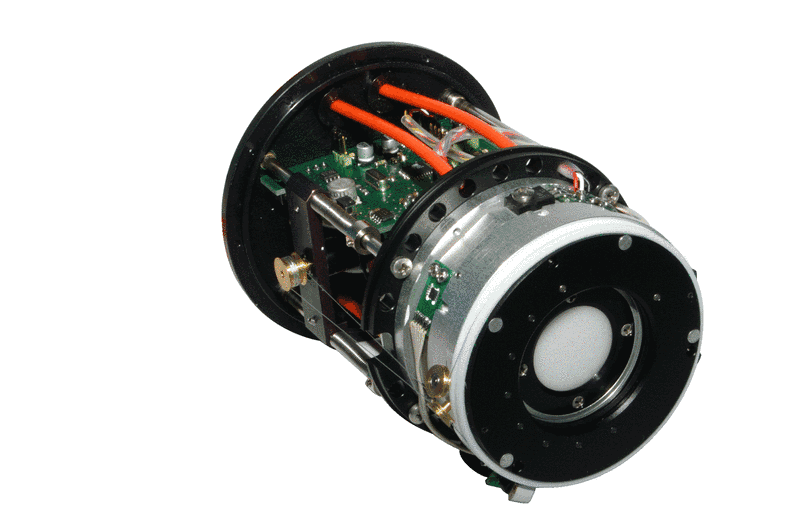PTB-Robotic goniometer measurement-equipment
We delivered the measurement-equipment for the PTB-robotic-goniometer-system.
The measurement-equipment is mounted on a robot-arm. The goniometer-system disposes of two measurement-arms. We delivered two complete measurement-equipments and also a system with a smaller configuration for calibration and tests.
A measurement-equipment consists of
- 5-Channel-measurement-head with coupled spectrometer
- Amplifier-box with 5 12-range-photocurrent-amplifiers and Uf-converters
- Elbow-box with control-unit, spectrometer and the power-supply for the measurement-equipment
The measurement-system works as an independent system controlled via ethernet.
All measurement-data and notifications are fixed to a timeclock of 1 MHz. Every event and notification is connected to this clock.
All sub-systems of the goniometer can work asynchronly due to this concept. After the measurement the data can be connected over the internal time-measurement.
Ozone-resistance: When operating luminaires eminating a lot of UV-rays this will form ozone. It can damage electronic parts or platines. The measurement-equipment is partly air-tight (amplifier-box) to prohibit this. The elbow-box can be setted under overpressure with the help of compressior-connections.

New measurement-head for photometric and spectral sizes for the PTB-robotic-goniometer
The development was a special measurement-head for the new robotic goniophotometer of the PTB. This measurement-head disposes of 5 channels as well as couple-optics for a spectral radiometer. The advantage was that all integrated sensors do their room-rating of the incoming rayonment over one single opening. Every sensor consists of one Si-photodiode and a filter-combination which adapts the diode to the wished spectral impact.
In general the sensor allows to measure light-intensity and light-colors on base of the 3-range-method. The integrated couple-optics for the light-conductor measures the spectrum of the light-source.
There is also an integrated thermostatisation of the sensor which allows to measure under high-precision conditions.
A motorized shutter allows the measurement of the dark-signals.
In addition to high-precision there were tight limitations regarding the mass and dimensions of the sensor. Because of the precision of the positioning of the robotic-arms the mass at the end of the arm could not be higher then 3kg. Also the whole operating-electronics (Amplifier, power-source, control-unit) had to be integrated into the end of the arm.
